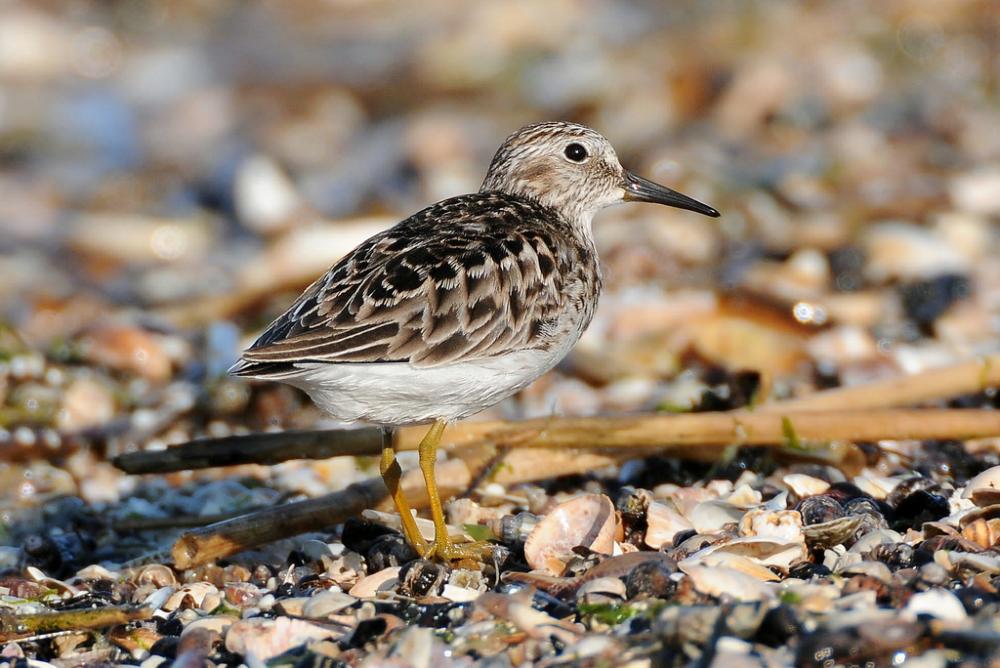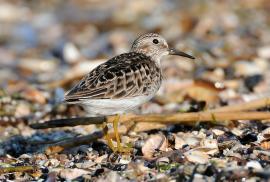Guide to Boreal Birds
Overview
Our smallest "peep," the Least Sandpiper is a common and relatively tame bird on inland mudflats and wet grassy areas. With their yellowish legs, they look like miniature Pectoral Sandpipers; like Pectorals, they prefer grassy areas to the more open flats frequented by most shorebirds. As might be expected of an inland bird it feeds heavily on insects, but when it feeds along the coast its diet is like that of the other "peeps"--the Western, Semipalmated, White-rumped (Calidris fuscicollis), and Baird's sandpipers--and includes crustaceans, mollusks, and marine worms.
Description
6" (15 cm). The smallest of American shorebirds. Brownish above, with yellowish or greenish legs, short thin bill, and streaked breast. Grayer in winter plumage. Bill shorter, thinner, and more pointed than in Semipalmated or Western sandpipers.
Voice
A clear treep; when feeding, a soft chuckle.
Nesting
4 pinkish-buff eggs, spotted with brown, in a nest lined with moss and grass placed on a dry hummock in a depression on boggy tundra.
Habitat
Grassy pools, bogs, and marshes with open areas; also flooded fields and mudflats.
Range/Migration
Breeds from Alaska east across northern Canada to Newfoundland and Nova Scotia. Winters along coasts from northern California and North Carolina southward; also in Southwest and Southeast.



